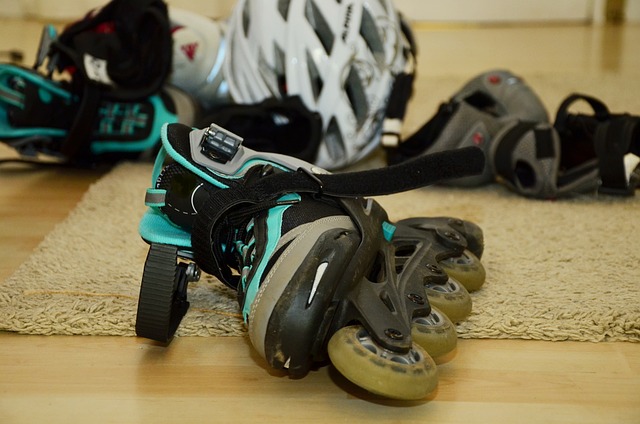Enhance Your Inline Skating Skills at Home! Here's How
INLINE SKATINGHEALTH AND SAFETY
7/19/20243 min read


Setting Up a Safe Practice Space
Creating a safe environment for practicing inline skating at home is crucial to prevent injuries and ensure a productive session. The first step is to choose the right space for your practice. An indoor area like a garage or basement offers a controlled environment, while a smooth outdoor surface such as a driveway or patio provides ample room to maneuver. Regardless of the location, the practice area should be clear of obstacles and free of debris to minimize the risk of falls and accidents.
Adequate lighting is essential for spotting potential hazards and maintaining proper visibility. If practicing indoors, ensure the area is well-lit with overhead lights or additional lamps. For outdoor practice, consider the time of day and natural light conditions; use portable lights if necessary during dusk or dawn to maintain visibility.
Wearing protective gear is non-negotiable when it comes to inline skating. Helmets, wrist guards, knee pads, and elbow pads are essential for safeguarding against injuries. According to the National Safety Council, helmets significantly reduce the risk of head injuries, while wrist guards and pads protect against fractures and scrapes. Inline skating experts also recommend using gear that fits well and is specifically designed for skating to ensure maximum protection.
In summary, setting up a safe practice space for inline skating at home involves selecting a suitable area, ensuring it is free of obstacles and debris, providing adequate lighting, and wearing appropriate protective gear. By following these guidelines, you can create a secure environment that allows for effective practice and skill improvement.
Fundamental Drills and Exercises
Improving your inline skating skills at home can be highly effective with the right combination of drills and exercises. A strong foundation in balance, agility, and control is essential for any skater, and these fundamental exercises will help you achieve that.
To start with balance exercises, one-foot glides are particularly beneficial. Begin by standing on one foot while maintaining a slight bend in your knee. Glide forward and focus on keeping your upper body steady and your core engaged. Switch feet and repeat the process. Consistent practice of one-foot glides will significantly enhance your stability and confidence on skates.
Agility is another crucial aspect of inline skating. Cone weaving is an excellent drill to develop your maneuverability. Set up a series of cones about a meter apart in a straight line. Skate through the cones, weaving left and right, maintaining a steady pace. This exercise will improve your ability to make quick, precise movements, which is vital for navigating through crowded spaces or performing tricks.
Strength-building exercises such as squats and lunges are indispensable for enhancing your skating power. Squats can be performed by standing with your feet shoulder-width apart, lowering your body as if sitting on an invisible chair, and then returning to the starting position. Lunges involve stepping forward with one leg, lowering your hips until both knees are bent at approximately 90 degrees, and then pushing back to the starting position. These exercises target your lower body muscles, providing the strength needed for powerful strides and jumps.
Consistent practice is key to mastering these drills and exercises. Inline skating coaches and instructional videos from reputable organizations like SkateIA and USARS offer valuable insights and demonstrations to further guide you. By integrating these fundamental drills into your routine, you'll notice a marked improvement in your inline skating skills, making your time on wheels more enjoyable and efficient.
Advanced Techniques and Skill Development
For inline skaters looking to elevate their skills, mastering advanced techniques is essential. These techniques not only enhance your performance but also ensure a more enjoyable and safe skating experience. One of the primary areas to focus on is improving speed. To achieve this, it's important to work on your stride efficiency. Practice maintaining a low center of gravity and using long, powerful strokes. Incorporate interval training into your routine to build both speed and endurance. Remember to start with shorter intervals and gradually increase the intensity as your stamina improves.
Another critical skill is mastering turns. Effective turning requires a combination of balance, control, and technique. Begin by practicing basic turns and gradually progress to more complex maneuvers such as crossovers and power slides. Pay attention to your body positioning; keep your knees bent and your weight centered over your skates. This will help you maintain control and stability during turns. Watching tutorials from expert skaters or enrolling in an advanced class at a reputable skating school can provide valuable insights and guidance.
Learning new tricks is also a great way to advance your inline skating skills. Start with simple tricks like jumps and spins, and as you become more comfortable, move on to more challenging ones like grinds and flips. Always prioritize proper form to prevent injuries. Use protective gear and practice on safe surfaces. Setting realistic goals and tracking your progress is crucial for continuous improvement. Keep a journal of your achievements and areas that need improvement, and review it regularly to stay motivated and focused.
Expert skaters and instructional guides from established skating schools offer a wealth of knowledge on advanced techniques. They emphasize the importance of gradual progression and maintaining proper form. By following their advice and dedicating time to practice, you can significantly enhance your inline skating skills and enjoy a more rewarding skating experience.
Contacts
information@skateshop.cc
Socials
Subscribe to our newsletter
Links
Shop Links
